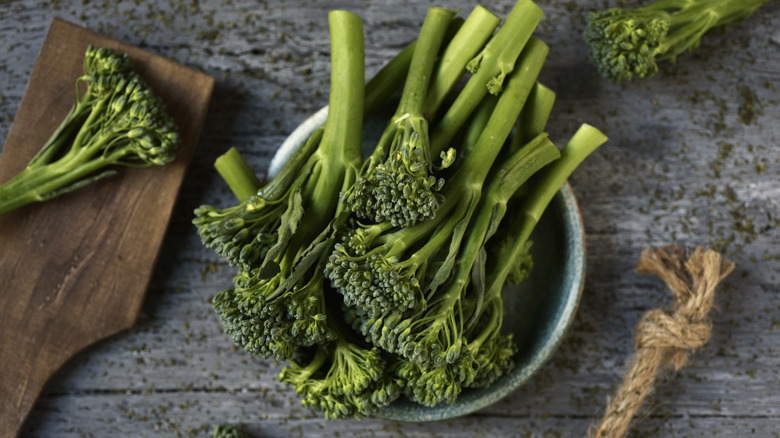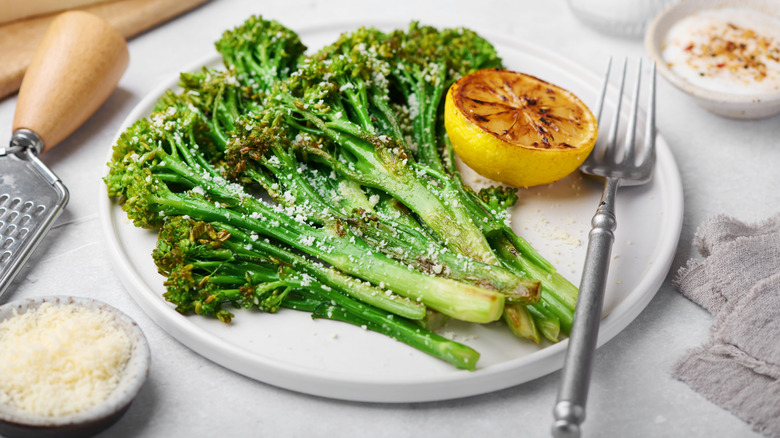What Exactly Is Broccolini And How Is It Different From Broccoli?
Because broccoli is the favorite vegetable of consumers in the majority of American states, it should come as no surprise that it tends to overshadow the incredibly similar vegetable known as broccolini. In fact, the similarities between broccoli and broccolini, from their names to their looks and texture, are due to the fact that broccolini is a hybrid vegetable made from combining standard broccoli with gai lan — a Chinese vegetable often referred to as Chinese kale. This is why broccolini has a thinner stem and a more leafy texture than the staple dinner-time vegetable, which is well-known for its thick stem and chunky crown of florets.
While these visual differences may seem minute enough to make broccoli and broccolini interchangeable in your favorite recipes, it's not quite that simple due to their differing tastes and textures. Standard broccoli, being a classic brassica, has an earthiness with a hint of bitterness, but broccolini has a much milder, sweeter flavor, with very little bitterness to it, though it does have a slight peppery bite. This is also the result of broccolini's gai lan ancestry. Perhaps the greatest difference is in the texture. Broccoli tends to be fairly hearty, with tightly packed, robust florets, and a fibrous stem with a tough outer skin that might need to be peeled away before cooking. Broccolini, however, has looser florets, and the stems, which are more tender, require much less prep than broccoli and can be eaten as-is.
The best ways to use broccolini
It's no surprise that broccolini isn't as well-known as broccoli in the United States, as the hybrid vegetable was just introduced stateside in 1996, having been developed in Japan three years prior. However, due to its elegant appearance, tender texture, and lack of bitterness, broccolini is becoming more popular in the U.S. with restaurant chefs and home cooks alike. Both versatile vegetables can be used to make some incredible dishes, but because of the differences in their taste and texture, they're ideal for different kinds of recipes. Broccoli, being sturdier, can hold up to more intense roasting and frying, and can be used in recipes that require a little longer cooking.
Slender, tender broccolini is best cooked quickly and simply to maintain the qualities that help to define it and make it so appealing. It can be eaten alone – ideally after it's been sautéed in garlic and topped with lemon juice. It also typically lends itself best to recipes that require a quick cook, which helps to preserve its mild, yet subtly sweet flavor. Think stir-fries, salads, or brothy, delicate noodle dishes, which benefit from the bright flavor and tender-crunchy texture of broccolini.

